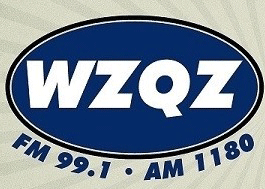As Georgia’s faith communities look towards 2025, a starkly divergent financial landscape is emerging, with some denominations experiencing growth while others face significant budgetary contractions. This mixed picture reflects national trends of declining giving and calls for greater financial transparency amidst evolving church engagement.
The state’s two largest denominations, the Georgia Baptist Convention (SBC) and the United Methodist Church (UMC) in Georgia, present a clear contrast in their financial outlooks for the coming year.
Georgia Baptists Exhibit Buoyant Outlook
The Georgia Baptist Mission Board, affiliated with the Southern Baptist Convention, is entering 2025 with a notably positive financial forecast. Its proposed 2025 budget includes a 2.5% increase, pushing the total to over $62 million. This growth is earmarked for supporting gospel-sharing initiatives both within Georgia and globally.
This budget increase is primarily attributed to positive trends in the Cooperative Program, the fundamental funding mechanism that pools resources from Southern Baptist churches to support missionaries, theological education, and various ministries worldwide. The upward trajectory suggests robust support from its member churches, enabling expanded outreach efforts.
United Methodists Navigate Significant Headwinds
In contrast, the United Methodist Church in Georgia is contending with considerable financial pressures, reflecting the broader challenges faced by the denomination nationally, including disaffiliation and declining attendance.
The South Georgia Conference is facing a particularly challenging year, with its 2025 budget projected to decrease by a steep 35% from the previous year. This cut follows earlier reductions, signaling persistent financial strain for the conference, which covers a large geographic area from the Chattahoochee River to the coastline.
The North Georgia Conference, while reporting a record high apportionment collection rate in 2024 – indicating strong local church compliance in meeting their financial commitments – is still bracing for future reductions. Its projected 2026 conference budget is set to be a 5% reduction from its 2025 budget. This nuanced situation suggests that even with effective local collection, the overall pool of resources and the number of contributing churches are shrinking, necessitating a leaner operational model.
National Trends Impacting Local Churches
These localized conditions in Georgia mirror broader national trends affecting the Christian landscape. Many churches across the United States are under financial pressure, grappling with a general decline in giving, which in some cases, is leading to difficult decisions, including potential church closures.
There is a growing demand for increased financial transparency and clearer reporting from churches and denominations. Congregants and stakeholders are increasingly seeking detailed information on how their contributions are being utilized, especially in an era marked by economic uncertainty and shifting patterns of religious affiliation.
To address these challenges, churches are being encouraged to adopt more robust and transparent financial reporting systems. Emphasis is also being placed on stronger financial stewardship, with leaders urged to communicate openly about their budgetary goals, successes, and challenges to maintain trust and foster continued support from their congregations.
As Georgia churches navigate this complex financial environment, the emphasis on adaptiveness, clear communication, and strategic stewardship will be paramount in ensuring their long-term stability and continued mission.








Comments